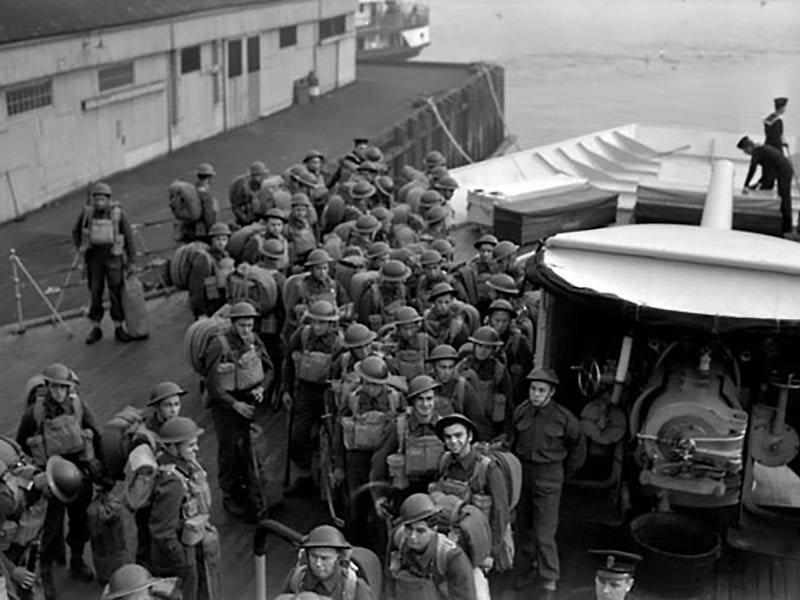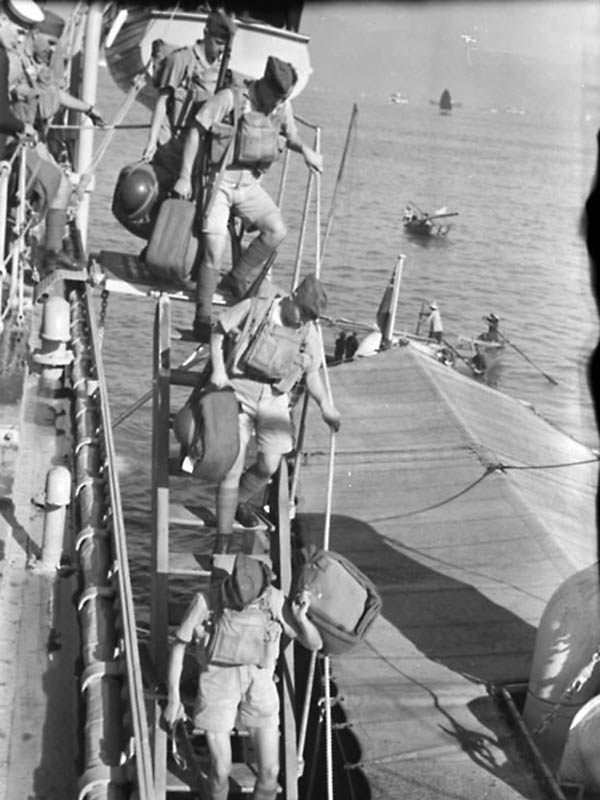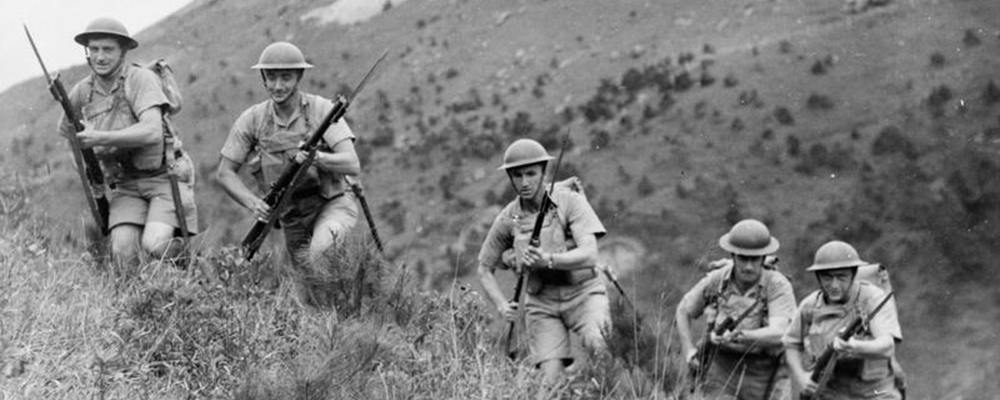
The Canadians arrive
Canada selected the Royal Rifles and the Winnipeg Grenadiers to help defend Hong Kong. In late October 1941, 1,975 Canadian soldiers set sail for the Far East from Vancouver on board the Awatea, escorted by HMCS Prince Robert.

Disembarkation of Force C from H.M.C.S. Prince Robert. Photo: Canada. Dept. of National Defence / Library and Archives Canada / PA-114820
The Canadians arrived in Hong Kong on November 16. They joined the 14,000-strong Hong Kong defence force, made up of troops from Britain, India, Singapore and Hong Kong. Although sent to a part of the world still at peace, they quickly began training and prepared for active defence of the colony under the command of Brigadier J.K. Lawson. Only three weeks would go by before they would find themselves in combat.
The defence of Hong Kong
On the morning of December 8, Japan attacked Hong Kong. Japanese warplanes pounded the airport and their ground forces poured across the frontier from China and into the mainland portion of the colony. Demonstrating an unexpected skill at night fighting, the Japanese kept advancing. After three days of combat, the defenders had been pushed from the mainland and back to Hong Kong. It was during this time that Canadian soldiers from D Company of the Winnipeg Grenadiers engaged the enemy, becoming one of the first Canadian Army units to fight in the Second World War.

Personnel of the Royal Rifles of Canada and mascot en route to Hong Kong. Photo: Canada. Dept. of National Defence / Library and Archives Canada / PA-116791
On December 13, and again on the 17th, the Japanese demanded the defenders' surrender only to be quickly rejected. During this time, the Canadians and other defending troops prepared for the inevitable Japanese assault on Hong Kong. On December 18, the Japanese crossed from the mainland in the darkness and invaded the island. The Allied defence positions quickly became overwhelmed and had to draw back into the mountains to the south.
Over the coming days and nights of heavy fighting, the Allies offered brave resistence and took part in many counter-attacks. However, the Japanese were able to maintain the offensive due to their greater numbers, battle experience, access to reinforcements and armaments, and total air domination. By contrast, Canadians and other Allies were relatively inexperienced, exhausted from continual battle and bombardment, and had no hope of receiving additional supplies or reinforcement. The Canadians suffered many casualties, including the death of Brigadier Lawson. It was during this fighting that Company Sergeant-Major John Robert Osborn of the Winnipeg Grenadiers earned the Victoria Cross, the highest award for military valour a Canadian can earn. Despite fighting to the end, by Christmas Day 1941, the battered Allies had no choice but to surrender.
Prisoners of war
The Canadians in Hong Kong had held out with heavy losses against impossible odds for more than 17 days before laying down their weapons. However, the ordeal for the surviving Canadians was far from over. They would become prisoners of war (POWs) for more than three-and-a-half years, first in Hong Kong until early 1943, and then in Japan until their liberation in September 1945.

Commander Peter MacRitchie of H.M.C.S. Prince Robert meeting with liberated Canadian prisoners-of-war at Shamshuipo Camp. Photo: Petty Officer Jack Hawes / Canada. Dept. of National Defence / Library and Archives Canada / PA-193015
In the prison camps, Canadian POWs became weak and malnourished from a starvation diet made up of a bit of rice, and some occasional greens and scraps of meat or fish. They lived in primitive, vermin-infested huts, that were often cold and damp in the winter. They were forced to work long and hard at slave labour in construction projects, shipyards and mines. The POWs endured great abuse and mistreatment by their guards. They were wracked by diseases like diphtheria and beriberi. Many died from these plagues, as the Japanese rarely supplied them with any medicine. More than 260 Canadian POWs died before they could be liberated. Those who survived left the labour camps gaunt, their rail-thin bodies demonstrating just how harsh their experiences had been.
Sacrifice
The defence of Hong Kong was a brutal chapter in Canada's military history. Of the almost 2,000 Canadians who sailed to Hong Kong in late 1941, more than 550 would never see Canada again. Many would die in the fierce combat of December 1941. Others would perish in the grinding conditions of the Japanese prison camps throughout the rest of the war. Many of those who did survive would return home with their health broken and their lives shortened by their experiences, forever shaken by their experiences and the extreme hardships they endured.
We remember
As the Canadians who fought in the defence of Hong Kong demonstrated so clearly, the men and women of our country have often put themselves in harm's way, even offering their lives, in the worldwide quest for peace, freedom and the preservation of human values. The experiences of the Canadians in Hong Kong serve as a lasting reminder of the high price of war and the incredible effort and sacrifice that Canadians and the Allies would put forth to eventually triumph in the Second World War. Canada and the world recognize the great effort and sacrifices made by these brave Canadians, an effort that lives on in our hearts and minds.
Learn more about Canada's efforts in the Asia and the Pacific region during the Second World War.
Photo Gallery
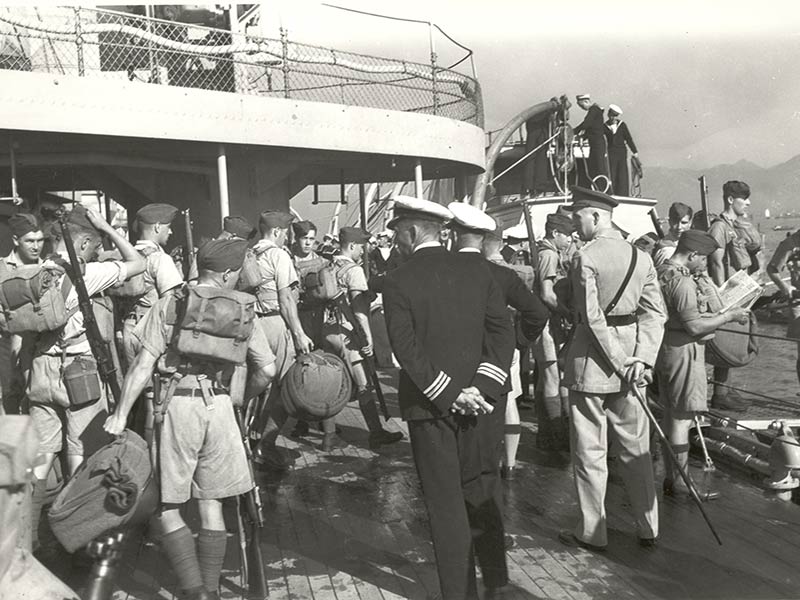
Disembarkation of Force C from H.M.C.S. Prince Robert. Photo: Canada. Dept. of National Defence / Library and Archives Canada / PA-114820

Landing party coming ashore from H.M.C.S. Prince Robert during the liberation of Hong Kong. Photo: Jack Hawes / Canada. Dept. of National Defence / Library and Archives Canada / PA-114810
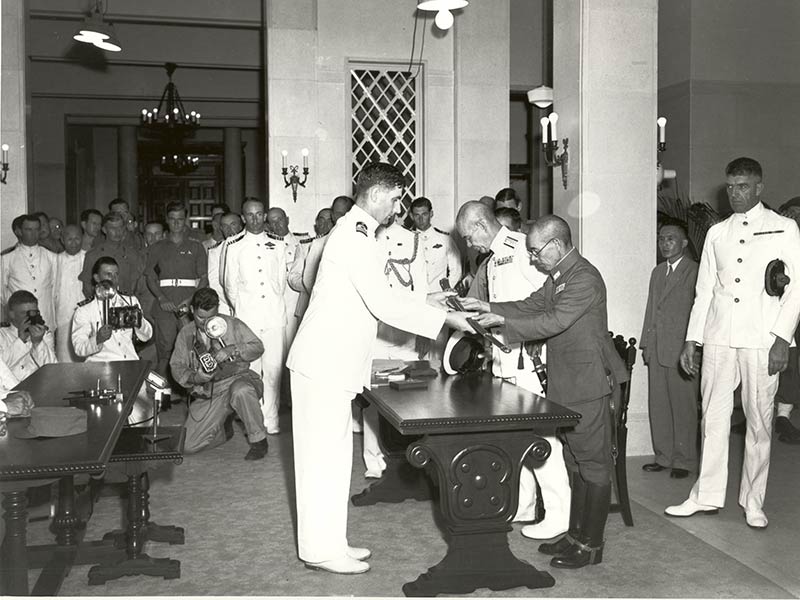
Major-General Okada handing over his sword during ceremony marking surrender of Japanese forces in Hong Kong, Government House. Photo: Jack Hawes / Canada. Dept. of National Defence / Library and Archives Canada / PA-114815
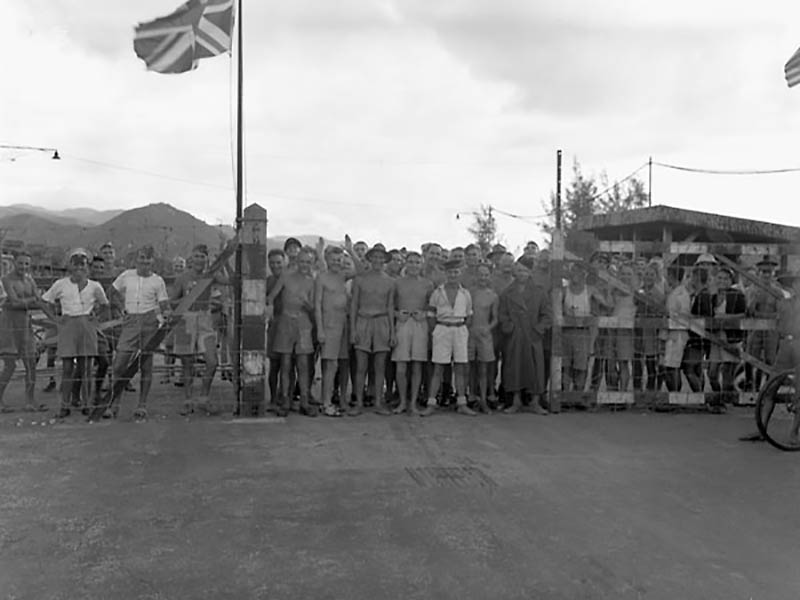
Canadian and British prisoners of war awaiting liberation by landing party from H.M.C.S. Prince Robert. Photo: Jack Hawes / Canada. Dept. of National Defence / Library and Archives Canada / PA-114811
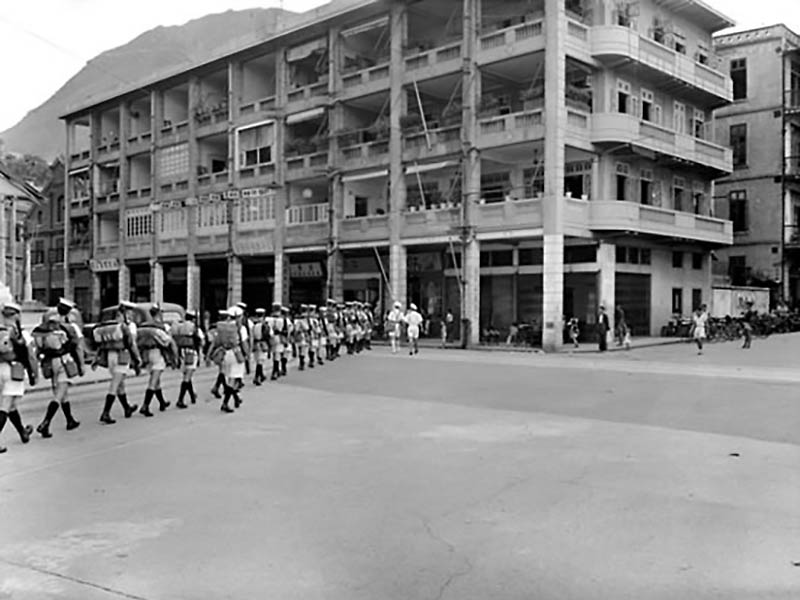
Landing party from the H.M.C.S. Ontario marching towards the Chinese Hotel, the headquarters of the Ontario and barracks for the troops. Photo: S.H. Draper / Canada. Dept. of National Defence / Library and Archives Canada / PA-136813
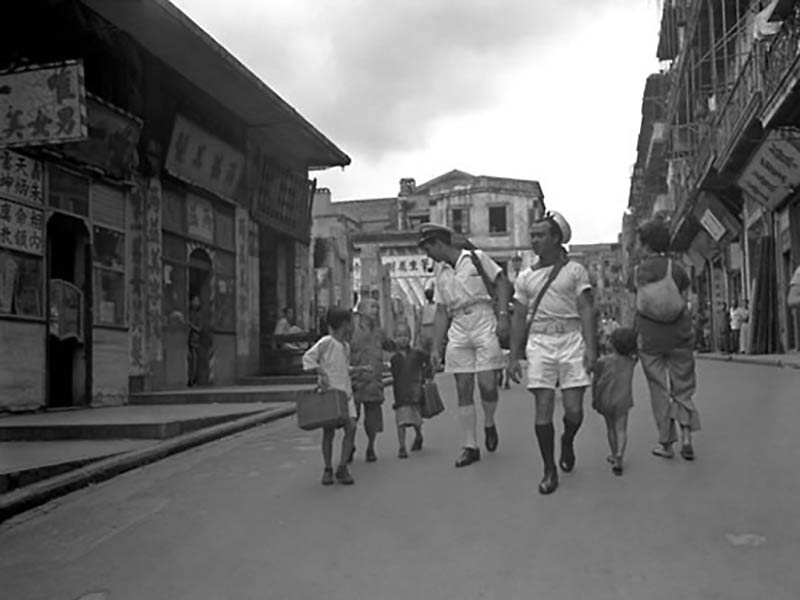
Chief Petty Officer Harold Kelly and Leading Seaman Nick Kryway of H.M.C.S. Prince Robert at liberty. Photo: Jack Hawes / Canada. Dept. of National Defence / Library and Archives Canada / PA-166427
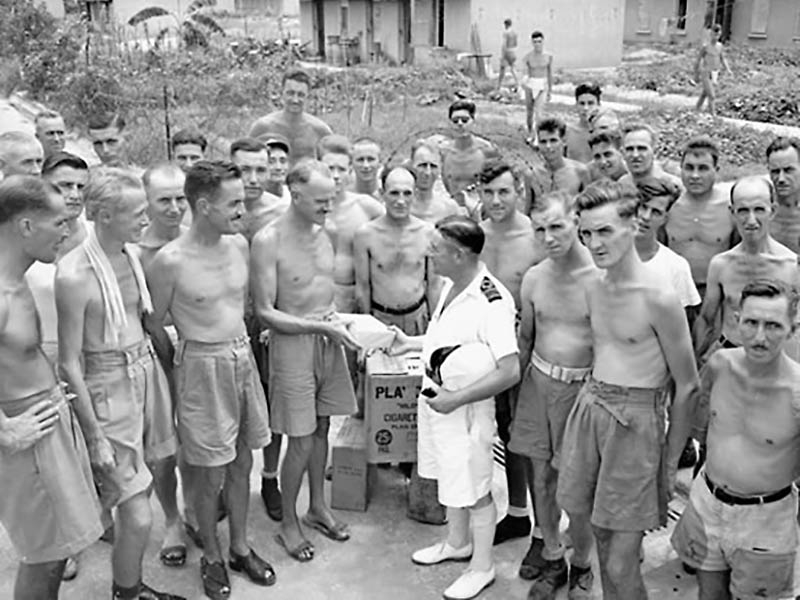
Commander Peter MacRitchie of H.M.C.S. Prince Robert meeting with liberated Canadian prisoners-of-war at Shamshuipo Camp. Photo: Petty Officer Jack Hawes / Canada. Dept. of National Defence / Library and Archives Canada / PA-193015
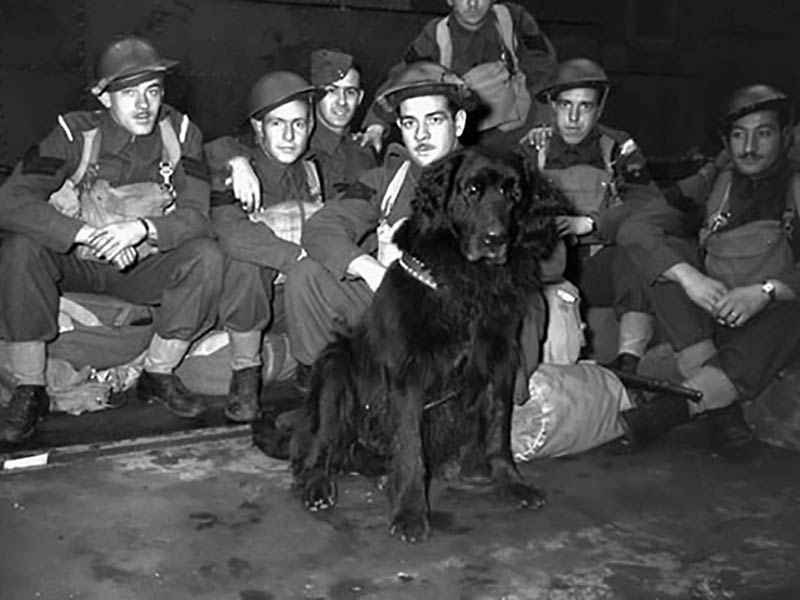
Personnel of the Royal Rifles of Canada and mascot en route to Hong Kong. Photo: Canada. Dept. of National Defence / Library and Archives Canada / PA-116791
